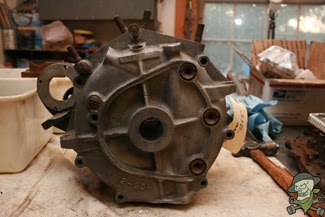My 1933 Harley-Davidson VL build is finally underway and I'll be cataloging the entire process with step by step articles on Riding Vintage. By the end of this project I hope to have a complete digital archive that someone could use as a blueprint to build their own V-series motorcycle. With that being said, any additional information, corrections, etc would be appreciated to make sure that everything is covered. This first article details how to prep and clean the engine cases before a complete engine rebuild.

Building a 1933 Harley-Davidson VL: Preparing the Cases

Building a 1933 Harley-Davidson VL: Preparing the Cases
 . I appreciate what you are saying but maybe a little overboard. I think proper cleaning is the key. Ever put oil in a bike in Florida? Ever take off the oil fill on a tranny in Florida? It is very hard to get rid of all the sand/oil mix around the plug first, so sand is going to get in there, we live in a world of contaminants. How hard is the carbon formed on the piston on the Scale you mentioned? I'm not trying to be facetious but I think we are getting too technical here. Bob #6738
. I appreciate what you are saying but maybe a little overboard. I think proper cleaning is the key. Ever put oil in a bike in Florida? Ever take off the oil fill on a tranny in Florida? It is very hard to get rid of all the sand/oil mix around the plug first, so sand is going to get in there, we live in a world of contaminants. How hard is the carbon formed on the piston on the Scale you mentioned? I'm not trying to be facetious but I think we are getting too technical here. Bob #6738
Comment